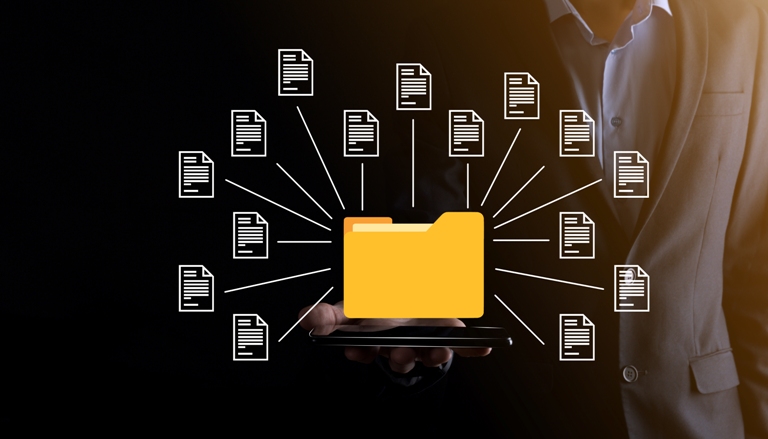
Government organizations include multiple departments, each with its responsibilities, workflows, and data. In such environments, collaboration is essential but often blocked by outdated systems, information dumps, and manual processes. A robust document management system for government organizations offers an efficient solution. It enables departments to work together more and respond cohesively during emergencies.
This article explores how a government document management system improves interdepartmental collaboration and supports coordinated disaster response.
A. Centralized Access to Shared Government Documents
One of the biggest barriers to collaboration in government organizations is the lack of centralized access to documents. Departments often maintain separate repositories, making it difficult to locate, share, or update critical files.
A document management system for government organizations solves this by creating a unified digital repository accessible to authorized personnel across departments.
Benefits of Centralized Access:
- Departments can retrieve shared documents without delays or duplication.
- Real-time updates ensure everyone works with the latest version.
- Role-based permissions protect sensitive data while enabling collaboration.
This centralized structure is valuable during joint initiatives, such as infrastructure development, policy drafting, or public health campaigns, where multiple departments must contribute and coordinate.
B. Streamlined Interdepartmental Workflows and Approvals
Government processes involve multiple layers of review and approval across departments. Without automation, these workflows can become bottlenecks, delay decisions, and reduce efficiency.
A government document management system automates these workflows, allowing documents to move seamlessly from one department to another based on predefined rules.
How Workflow Automation Enhances Collaboration:
- Documents are automatically routed to the right department or official.
- Notifications alert stakeholders when action is required.
- Status tracking provides visibility into progress and bottlenecks.
For example, a procurement request initiated by the finance department can be automatically forwarded to legal for compliance review and then to administration for final approval, all within the DMS.
C. Real-Time Collaboration on Policy and Planning Documents
Policy development and strategic planning often require input from multiple departments. Traditional methods, such as email chains, printed drafts, and manual edits, are inefficient and prone to errors.
A document management system for government organizations enables real-time collaboration, allowing multiple users to edit, comment, and review documents simultaneously.
Collaborative Features that Drive Efficiency:
- Version control prevents conflicts and preserves document history.
- Commenting tools help in discussion and feedback.
- Shared editing environments reduce turnaround time.
This is useful when drafting interdepartmental policies, such as environmental regulations or public safety protocols, where input from legal, planning, and enforcement agencies is essential.
D. Secure Information Sharing During Emergency Coordination
During disasters, such as floods, earthquakes, or pandemics, government departments must act quickly and in alliance. Coordination depends on the rapid exchange of accurate information.
A document management system for government organizations provides a secure platform for sharing emergency plans, resource inventories, and real-time updates across agencies.
Emergency Coordination Capabilities:
- Crisis documents are stored in dedicated, easily accessible folders.
- Mobile access allows field officers to upload reports and images instantly.
- Interagency access ensures that health, police, and fire teams are aligned and coordinated.
For instance, during a flood response, the public works department can share infrastructure damage reports with emergency services, while health officials upload medical resource availability, all within the same system.
E. Audit Trails and Accountability across Departments
Transparency and accountability are critical in government operations, especially when multiple departments are involved. A government document management system maintains detailed audit trails for every interaction with every document.
How Audit Trails Support Collaboration:
- Every edit, comment, and approval is logged with timestamps and user IDs.
- Departments can track who accessed or modified a document, as well as when.
- This ensures compliance with internal policies and external regulations.
Audit trails are crucial during emergency responses, as decisions must be documented and reviewed to enhance future readiness.
F. Integration with Other Government Systems
To maximize collaboration, a document management system for government organizations must integrate with other platforms used by various departments.
Integration benefits:
- Documents can be linked to geographic data for location-based planning and analysis.
- Citizen records can be accessed along with service delivery documents.
- Financial approvals can be tied directly to budget documentation.
Such integrations create a seamless digital ecosystem that enables departments to collaborate seamlessly without switching between disconnected systems.
G. Disaster Preparedness through Document Standardization
Effective disaster response starts with being ready. A government document management system helps standardize emergency documentation across departments. This ensures consistency and clarity, which empowers departments to prepare themselves effectively.
Standardization Advantages:
- Templates for emergency plans, checklists, and reports are shared across agencies.
- Consistent formats reduce confusion during high-pressure situations.
- Training materials and protocols are easily accessible for all departments.
This ensures that when a disaster strikes, every department knows where to find the necessary documents and how to act on them.
H. Mobile Access for Field Collaboration
Field officers play a crucial role during emergencies, but they often lack access to centralized systems. A document management system for government organizations with mobile capabilities bridges this gap.
Mobile Collaboration Features:
- Officers can upload photos, videos, and reports from the field.
- Real-time syncing ensures headquarters receive updates instantly.
- Mobile dashboards provide access to critical documents on the go.
This empowers departments like disaster management, health, and law enforcement to collaborate effectively, even outside the office.
I. Training and Change Management for Collaborative Success
Implementing a government document management system requires more than technology. It demands cultural change. Departments must be trained to use the system collaboratively and consistently.
Training Essentials:
- Cross-departmental workshops to align workflows and expectations.
- Role-specific training to ensure proper use of permissions and tools.
- Ongoing support to address challenges and encourage adoption.
With proper training, departments can fully use the DMS to enhance collaboration and emergency coordination.
Conclusion:
A document management system for government organizations is not just a tool; it’s a strategic asset that transforms how departments work together. From daily operations to disaster response, it enables secure, efficient, and transparent collaboration.
By centralizing access, automating workflows, supporting real-time editing, and integrating with other systems, a government document management system empowers government agencies to serve the public more effectively and respond to crises with agility. As governments continue to modernize, investing in a robust DMS is essential for building collaborative and responsive institutions.










